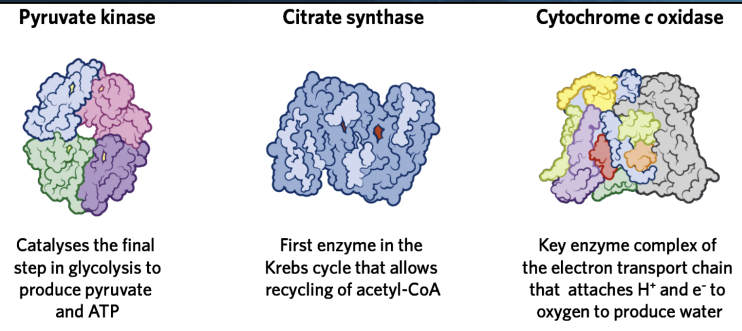Cellular Respiration Part A
Purpose of Cellular respiration:
TO transfer chemical energy stored in glucose into ATP which is used to power cellular reaction.
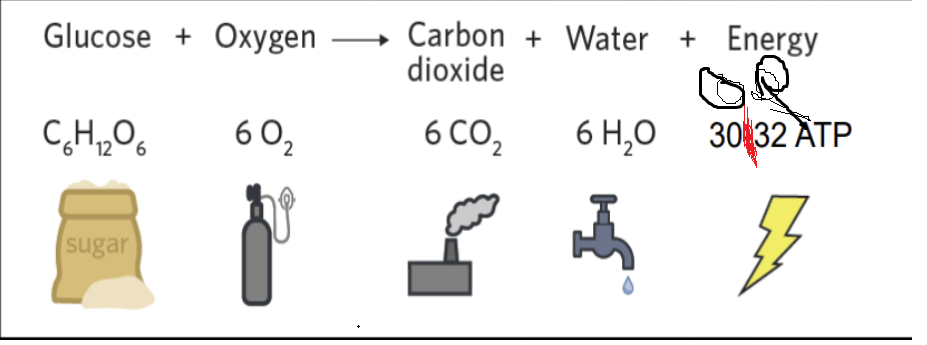
Why ATP is used mto provide energy
ATP is used because energy can be easily released in a single step

ATP also has fast turn over rate
WHY not just use glucose
THe release of energy from glucose occurs via conmplext multistep pathway which is much slower
Energy in glucose is high (3000kj) compared to ATP (30kj)
Two types of cellular respiration:
Aerobic cellular respiration
requires oxygen
produces 30 or 32 ATP molecules per one glucose molecule
Anerobic Fermentation:
does not require oxygen
produces 2 ATP molecules per one glucose molecule
produces harmful by-products (lactic acid or ethanol)

Aerobic Cellular Respiration
Not a simple process, instead there are many enzyme controlled reaction which are need to convert glucose and oxygen into water CO2 and ATP
3 stages
Glycolysis
The Krebs cycle
The electron Transport chain
Role of mitochondria in aerobic cellular respiration
Mitochondria are crucial to aerobic cellular respiration as they are the site at which stages two and three occur
Mitochondria are complex organelles made up of many different structures

Aerobic cellular respiration vs Photosynthesis
Cellular respiration and photosynthesis are related but they are not direct counterparts
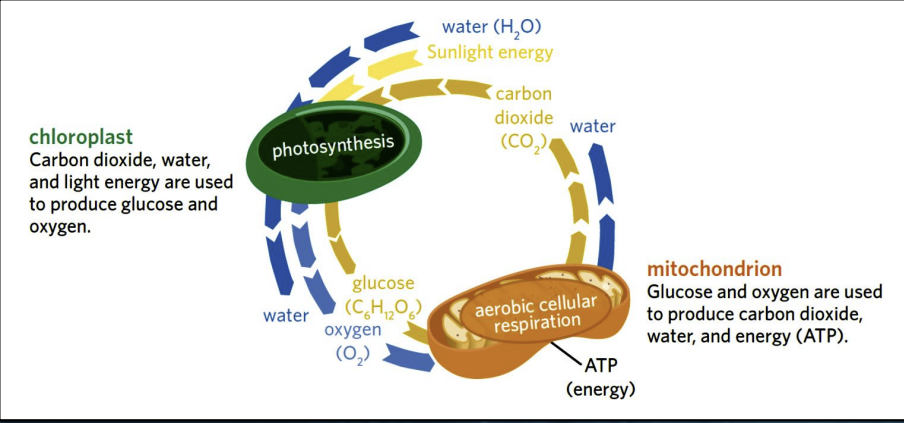
Glycolysis
occurs in Cytosol of cells
involves the breakdown of 6 carbon glucose in two 3 carbon pyruvate molecules via a sequence of 10 enzyme regulated reaction
results in net production 2 ATP molecules
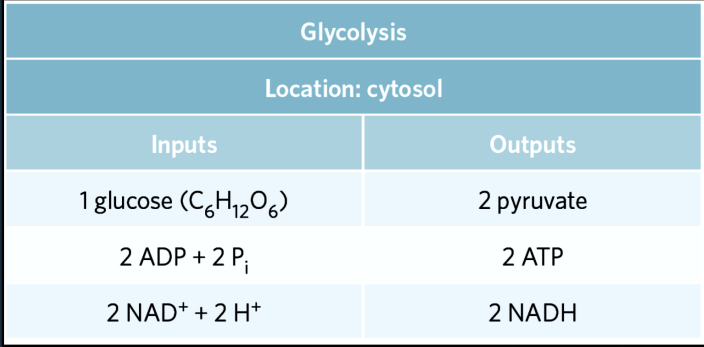 As glucose is broken down into pyruvate, energy is released
As glucose is broken down into pyruvate, energy is released
 ATP is free to power cellular reactions
ATP is free to power cellular reactions
Pyruvate and NADPH move to mitochondria to assist in the second stage of aerobic cellular respirations: The Krebs Cycle
Link Reaction
TO link Glycolysis and the Krebs cycle, Pyruvate moves from cytosol to matrix of mitochondrial and combines with coenzyme A (CoA) to form acetyl coenzyme A (acetyl-CoA)
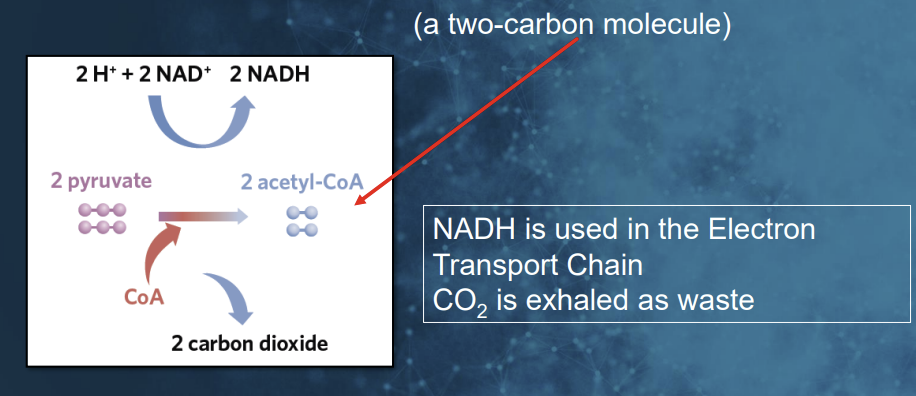
Krebs Cycle ( also known as the Citric Acid Cycle)
takes place in mitochondrial matrix
consists of 8 reactions that break down acetyl CoA
- the breaking down of acetyl CoA results in the release of protons and high energy electrons which are loaded onto NAD+ and FAD to generate high energy coenzymes NADH and FADH2produces 2 ATP
During formation of acetyl-CoA from pyruvate - 1 CO2 molecule is produced
During one full turn of the Krebs cycle - 2 CO2 molecules are produced
In Summary:
In ONE turn of the Krebs Cycle, acetyl-CoA is metabolised into:
2 Co2 molecules
1 ATP molecule
3 NADH molecules
1 FADH2 molecule
In TWO turns of the Krebs cycle, these values are doubled
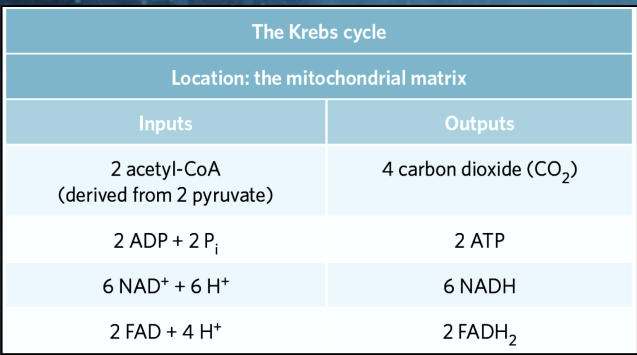

The Electron Transport Chain - ETC
takes place on inner membrane of mitochondria (Cristae)
place where majority of ATP is produced
converts high-energy coenzymes NADH and FADH2 back to NAD+ and FAD forms which are then recycled for continued use in glycolysis and the Krebs cycle

Steps involved in making ATP at Electron Transport Chain:
NADH and FADH unload protons and electrons at first and second protein of ETC
NADH converted to NAD+

FADH2 converted to FAD


Excitedd electrons power active transport of protons from mitochondirial matrix into narrow intermembrane space
Concentration of protons increases

To move down concentration gradient, protons need to move through protein channel (ATP synthase) - ADP + P > ATP
Large amounts of ATP are made
Unbound protons and electrons bind with oxygen to produce water
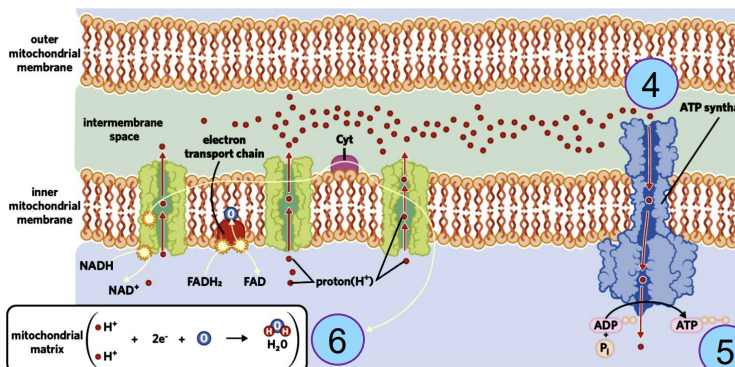
In Summery:
for every glucose molecule metabolized, 30 or 32 ATP molecules are formed:2 ATP (from glycolysis)
2 ATP (from Krebs Cycle)
26 or 28 ATP (from ETC)
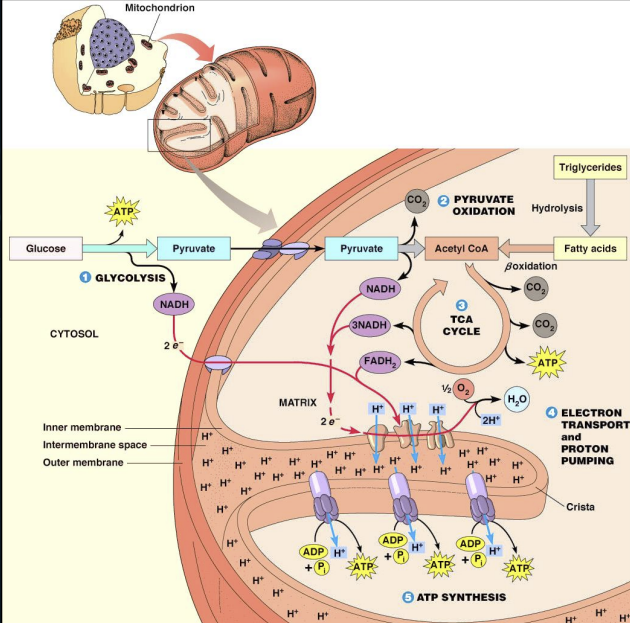
Glycolysis:
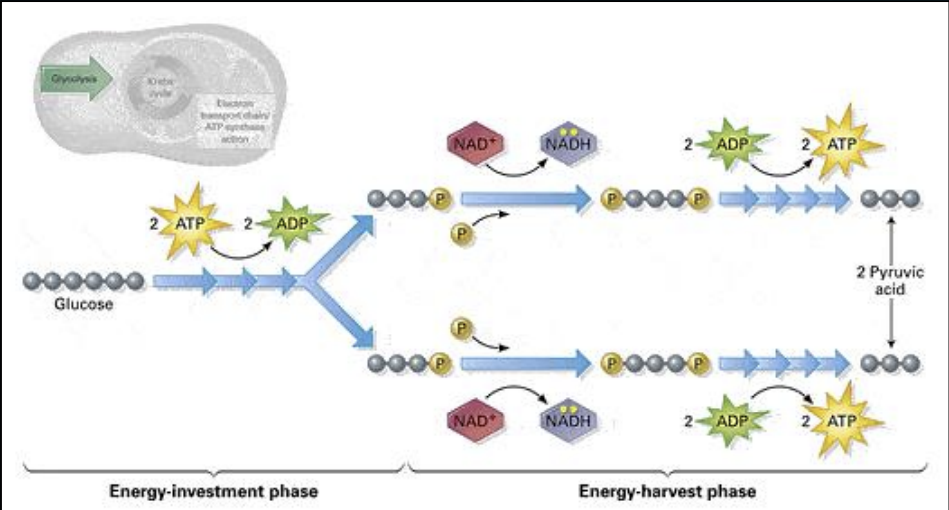
Krebs Cycle:
Electron Transport CHain:
Enzymes and coenzymes in cellular respiration:Enzymes, with the help of their coenzymes, catalyse the reactions of cellular respiration to allow them to proceed at a fast rate.
This means that cells can breakdown and extract energy from glucose at a rate fast enough to sustain energy-dependent processes
Since each enzyme is only capable of catalysing one specific reaction, there is a wide range of enzymes involved in cellular respiration
EXAMPLES OF SOME KEY ENZYMES IN CELULLAR RESPIRATION: